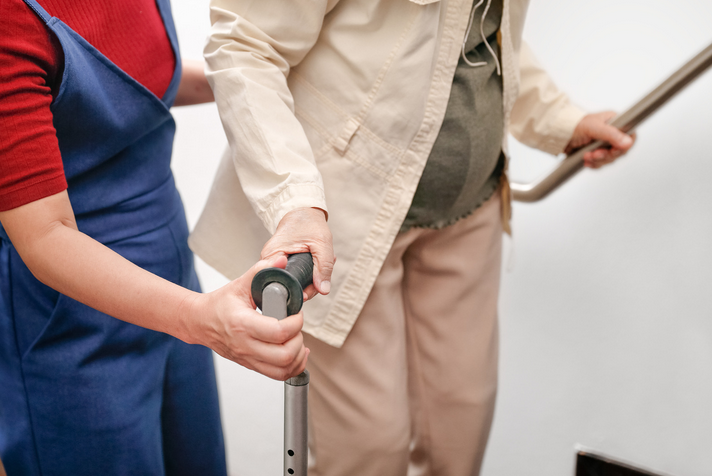
By Anne Lindsey
What exactly is the logic behind sending Home Care workers to do shifts in personal care homes during the COVID-19 pandemic?
The point of Home Care is to assist people who need help with a variety of physical, personal and health-related necessities in order to stay in their own homes and out of institutional care settings. Public Home Care services are provided both for persons with disabilities and for the elderly in our province, my concern in this article is primarily focussed on elder care, as it is what I’m more familiar with. Home Care in Manitoba is not perfect. Even pre-COVID, concerns were expressed about inadequate funding for the service, but really it’s a good system for helping to manage the care needs of the elder population in today’s society. As someone with a parent who needs more assistance than we ourselves can provide, I feel we are fortunate to have it.
Elders who require Home Care are by definition vulnerable to COVID-19. As it has been described to me by both the employer (WRHA in this case) and the union that represents them, Home Care workers may not assist at a Personal Care Home (PCH) and go to their home-based clients in the same shift. But the day after a PCH shift, they can go back into the home visit rotation. How does this make sense given the high rate of COVID-19 spread in the PCH system? Wasn’t that spread the very reason Personal Support Workers in the care homes were made to limit their work to only one facility during the first wave? It obviously and immediately increases the exposure risk for Home Care clients. If these clients get sick, national and provincial COVID statistics demonstrate that they are THE most likely population to get very sick, to be hospitalized, potentially in Intensive Care, and most likely to die. Is this what we want to see happen?
At the same time, Home Care workers’ risk also expands. As we see with a variety of health care professionals in high-COVID-positive settings, they will be more likely to contract the disease or come into contact with it, forcing isolation and time off, if not worse. The Home Care workforce will be subject to even greater pressure and services will inevitably be further reduced. The result? Higher risk of falls, accidents and other issues amongst home care clients struggling to do things for themselves, leading to more potential hospitalizations in an already overburdened system, and so on.
Add to all of this, the fact that many elders in their own homes also rely heavily on family members for supplemental care beyond that which Home Care provides. This includes tasks such as shopping, meal preparation, cleaning and other personal needs. Those doing the bulk of this care that I have met are often themselves over 60, often still working, and they have their own health issues, and they are also vulnerable to COVID-19 complications.
In our own case where I help to provide necessary care for my mother, our family’s extremely cautionary “bubble” that we’ve had in place since the beginning of the pandemic has just expanded considerably because of this move. This situation is not risk-free, especially when we learned that Home Care workers must also go into COVID- positive homes during their regular shifts.
Absolutely, more help is desperately needed in PCH. The tragedy that continues to unfold speaks to a serious lack of preparation in Manitoba. Yes, this is complex and challenging, and in the context of government under-funding for Home Care and PCH in Manitoba’s health care system, it’s understandable that management would wish to “use internal resources” where possible, as Chief Nursing Officer, Lanette Siragusa noted in the Province’s November 27 COVID news briefing. But this scheme utterly falls down when it robs one vulnerable sector of its resources in a frantic attempt to bolster another. This is happening across the system as we see daily, but my fear is that the Home Care situation is not as high-profile and may be considered an easy target from which to transfer personnel.
There are choices available. Quebec called upon the military to help. The Red Cross may be able to increase assistance. More funding can be allocated to ramp up rapid training opportunities and strengthen these public services. Instead of being starved for resources, the Home Care system should be strengthened to enable more elders to stay in their own homes. Home Care staff should be recognized as the essential, front-line workers that they are, and they should be immediately eligible for the wage top-up just announced by the Province for those who work in PCH, should be accorded the same kind of wage increase now afforded nurses who are transferred to higher risk situations and should always receive full pay for sick time and basic benefits.
The dreadful scenario that Manitoba now faces is only getting worse as the recent wave of cases manifests in even higher acute hospitalization. It should not be exacerbated by making vulnerable people bear the brunt of competition for scarce resources in the health care system.
Anne Lindsey is a Research Associate with the Canadian Centre for Policy Alternatives – Manitoba


